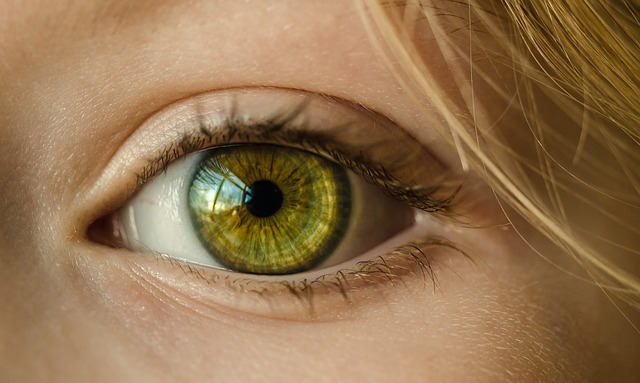
You may have seen iridology listed under our services or have heard of it but don’t really know what it is.
Iridology, simply, is the analysis and study of the iris and pupil. These areas are like a map. They show several things, including:
- Physiological conditions
- Inherited tendencies
- Psychological health risks
- Challenges/Strengths of organs
- Personality traits
- Toxic accumulations
During an iridology session, we will photograph your eye and talk about what it shows and what these things mean.
The goal of this post is to give you an idea of some of the basics. It is required reading for anyone wishing to book an iridology appointment.
A brief history
One of the earliest iridologists was Dr. Ignaz von Peczely. As a child, this Hungarian doctor cared for an owl that broke its leg by getting caught in fencing young Peczely was installing. While nursing the owl back to health, he noticed a black mark appear in the owl’s eye which changed, as time passed and the owl healed, in shape and shading. After becoming a doctor, it is said he sketched all his patients’ eyes during their appointments and used these sketches to help diagnose the patients.
Around the same time, but in Sweden, Niles Liljequist became ill from a vaccination. He noticed as he was treated with quinine and iodine that his formerly blue eyes changed color as spots appeared.
Both men, who never met, had eye charts that were very similar.
In America, Dr. Henry Edward Lane and his student, Dr. Henry Lindlahr, were among the earliest and most prolific researchers. Dr. Bernard Jensen helped to spread iridology in the United States. He was a student of Dr. Lindlahr. Dr. Jensen is especially notable because he used the findings from iridology to make recommendations to help balance health in his patients.
The Colors
There are three basic eye colors. All others are made by overlaying pigments over the basic colors.
Blue or Lymphatic

- Predisposed to problems with:
–Respiratory system
–Lymphatic system
–Inflammation
- Examples:
–Allergies & ear/nose/throat illnesses
–Swollen glands
–Asthma, bronchitis, sinusitis
–Arthritis & rheumatism
–Hardening of the arteries with advanced age
True Brown or Hematogenic

- Predisposed to problems with:
–Bowel/Colon
–Circulatory system
–Liver
- Examples:
–Poor circulation
–Digestive disorders
–Liver congestion & problems with bile production
–Glandular conditions
–Variable blood sugar levels
–Hormone imbalances
–Tendency to become ill-tempered and difficult with advanced age
Mixed

- Predisposed to problems with:
–Colon/Bowel
–Liver
–Pancreas
- Examples:
–Sluggish liver/gallbladder conditions
–Constipation or diarrhea
–Flatulence
–Glandular conditions
–Variable blood sugar levels
Fiber Constitutions
The structure of the fibers in the iris are indicators for the inherited mineral base a person received from his/her parents.
Strong
Fibers are close together and straight
When this person is sick, which may be rarely, s/he bounces back quickly
Fair
Fibers are wavy and further apart
This person will be sick a bit more often and take longer to recover
Weak
Fibers are wavy and far apart
This person will get sick fairly often and find recovery can take a long time

Zones of the Iris
There are more detailed maps, but this gives a general idea.

Pupils
- Pupil size
–Constricted pupils indicate the nerves need to be nourished. They are tense, on high alert, and trying to hold everything in/together.
–Dilated pupils indicate the adrenals are exhausted and need to be nourished.
- Pupil border
–Any imbalance here indicates a lack of hydrochloric acid in digestion.
–Represents the spine.
Collarette
- aka Nerve Wreath
- The inner area of the iris that surrounds the pupil
- This area represents
–Stomach
–Intestine
–Autonomic Nervous System
Colors
In general, lighter areas (than base eye color) indicate overactivity and stress. Darker areas (than base eye color) indicate underactivity and weakens.
–Orange
- Chemical (pigment) looks fiery
- Pancreas imbalance (if not pigment) looks earthy and blended
- Candida looks like glitter spilled in eye
- Pancreas bears most of the burden of chemicals when in the body
–Brown
- Heavy Metals (pigment)
- Liver (if not pigment)
- Liver bears most of the burden of heavy metals when in body
–Yellow
- Kidney looks earthy (like someone spilled urine in the eye)
- Candida looks fiery
–White
- Inflammation, stressed, overactive
–Grey
- Tissue weakness/deterioration (when white is going gluey-looking)
–Black
- Dead tissue. Final stage
Other Changes
- Weakness Areas
–Areas where the fibers are thinning are called rarefaction
–Areas where this weakness is stronger are called lacuna
- Stress Indicators
–Stress Rings indicate areas where stress has become internalized by the body (nervous system stress)
–Radial Furrows indicate stress from colon that are affecting other areas of the body (ie leaky gut)
- Emotional Indicators
–Defect signs (also called substance defect signs) look like someone took a hole punch to an area of the eye
Please consider scheduling an iridology session today!

Interested, in iridiology, to o find out about , causes of my glaucoma, that has caused my optic nerve condition,that supposed has effected my right eye, to be damaged, can’t see nothing out of, still doing visual field test for both eyes,and prescribed eye drops, I’ve been injured in this one eye, through out my life, fearful to be going blind ,creating lots anxiety, fear and stressed, its called open angle glaucoma, by chance my ophalmologist. He told me its genetic I’m the only one in my entire family of immediate family of 14 siblings, not parents, great, great grands,no one wears glasses but me and I’m the second oldest,. Need to know why.and possibly other conditions I have to, I am a senior…. Thank you.
Beverly, thank you for your post and interest! I am sorry to hear about your glaucoma and nerve damage. There are several causes of glaucoma, often relating to a root liver issue or a nutritional deficit in the body. Consider scheduling an appointment so I could take a more in-depth look at your situation and tailor a program for your specific needs. I now offer email consultations as well. All the best to you!